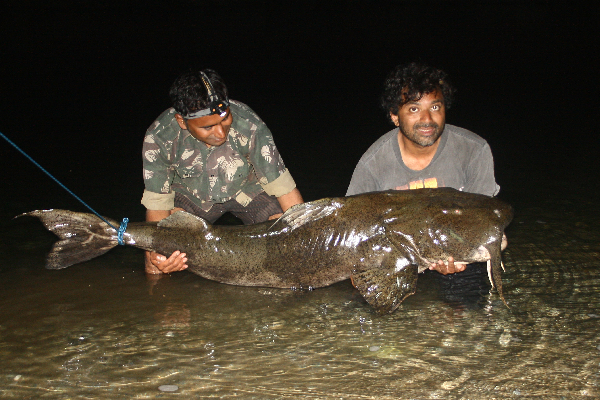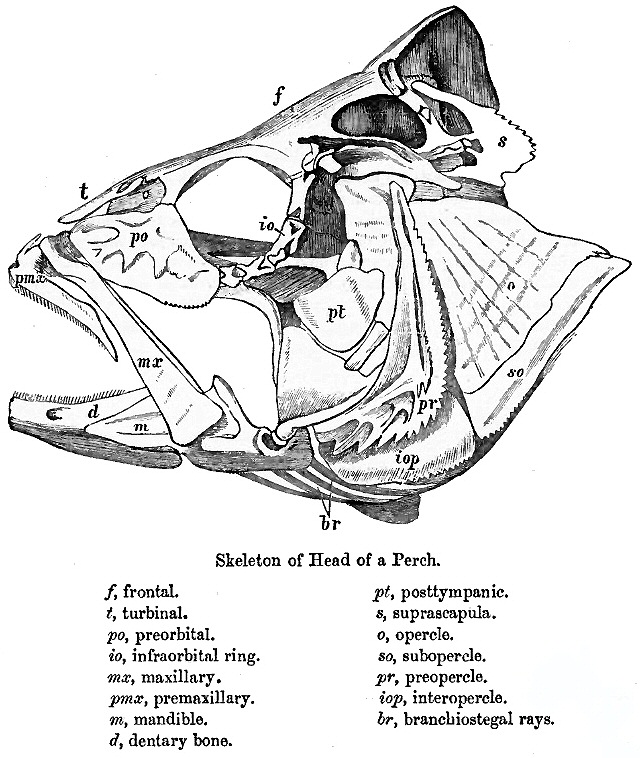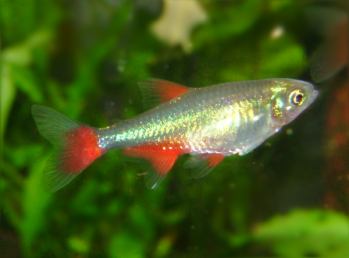|
Ostariophysi
Ostariophysi is the second-largest superorder of fish. Members of this superorder are called ostariophysians. This diverse group contains 10,758 species, about 28% of known fish species in the world and 68% of freshwater species, and are present on all continents except Antarctica. They have a number of common characteristics such as an alarm substance and a Weberian apparatus. Members of this group include fish important to people for food, sport, the aquarium industry, and research. Taxonomy The superorder is divided into two series, Anotophysi and Otophysi. However, in older literature, Ostariophysi was restricted only to the fish that are currently classified under Otophysi. Otophysi was coined in 1970 by Rosen and Greenwood to separate the traditional Ostariophysians from the added Gonorynchiformes. The superorder is classified below: *Series Anotophysi ** Gonorynchiformes, about 107 species *Series Otophysi (Euostariophysi) ** Cypriniformes ( minnows and allies), a ... [...More Info...] [...Related Items...] OR: [Wikipedia] [Google] [Baidu] |
Cypriniformes
Cypriniformes is an order of ray-finned fish, which includes many families and genera of cyprinid ( carps and their kin) fish, such as barbs, loaches, botias, and minnows (among others). Cypriniformes is an "order-within-an-order", placed under the superorder Ostariophysi—which is also made up of cyprinid, ostariophysin fishes. The order contains 11–12 families (with some authorities having listed as many as 23), over 400 genera, and more than 4,250 named species; new species are regularly described, and new genera are recognized frequently.Eschmeyer, W.N., Fong, J.D. (2015Species by family/subfamilyin the Catalog of Fishes, California Academy of Sciences (retrieved 2 July 2015) Cyprinids are most diverse in South and Southeast Asia and are entirely absent from Australia and South America.Nelson (2006) At 112 years old, the longest-lived cypriniform fish documented is the bigmouth buffalo. Their closest living relatives are the Characiformes ( characins, tetras a ... [...More Info...] [...Related Items...] OR: [Wikipedia] [Google] [Baidu] |
Characiformes
Characiformes is an order of ray-finned fish, comprising the characins and their allies. Grouped in 18 recognized families, more than 2000 different species are described, including the well-known piranha and tetras.; Buckup P.A.: "Relationships of the Characidiinae and phylogeny of characiform fishes (Teleostei: Ostariophysi)", ''Phylogeny and Classification of Neotropical Fishes'', L.R. Malabarba, R.E. Reis, R.P. Vari, Z.M. Lucena, eds. (Porto Alegre: Edipucr) 1998:123-144. Taxonomy The Characiformes form part of a series called the Otophysi within the superorder Ostariophysi. The Otophysi contain three other orders, Cypriniformes, Siluriformes, and Gymnotiformes. The Characiformes form a group known as the Characiphysi with the Siluriformes and Gymnotiformes. The order Characiformes is the sister group to the orders Siluriformes and Gymnotiformes, though this has been debated in light of recent molecular evidence. Originally, the characins were all grouped within a sin ... [...More Info...] [...Related Items...] OR: [Wikipedia] [Google] [Baidu] |
Catfish
Catfish (or catfishes; order (biology), order Siluriformes or Nematognathi) are a diverse group of ray-finned fish. Catfish are common name, named for their prominent barbel (anatomy), barbels, which resemble a cat's whiskers, though not all catfish have prominent barbels or "whiskers", with some seemingly not having them. Siluriformes as a whole are Fish scale, scale-less, with neither the Armoured catfish, armour-plated nor the naked species having scales. This order of fish are Autapomorphy, defined by features of the skull and swimbladder. Catfish range in size and behavior from the three List of largest fish, largest species alive, the Mekong giant catfish from Southeast Asia, the wels catfish of Eurasia, and the piraíba of South America, to detritivorous and scavenging bottom feeders, down to tiny ectoparasitic species known as the Candiru (fish), candirus. In the Southern United States, catfish species may be known by a variety of slang names, such as "mud cat", " ... [...More Info...] [...Related Items...] OR: [Wikipedia] [Google] [Baidu] |
Siluriformes
Catfish (or catfishes; order Siluriformes or Nematognathi) are a diverse group of ray-finned fish. Catfish are named for their prominent barbels, which resemble a cat's whiskers, though not all catfish have prominent barbels or "whiskers", with some seemingly not having them. Siluriformes as a whole are scale-less, with neither the armour-plated nor the naked species having scales. This order of fish are defined by features of the skull and swimbladder. Catfish range in size and behavior from the three largest species alive, the Mekong giant catfish from Southeast Asia, the wels catfish of Eurasia, and the piraíba of South America, to detritivorous and scavenging bottom feeders, down to tiny ectoparasitic species known as the candirus. In the Southern United States, catfish species may be known by a variety of slang names, such as "mud cat", "polliwogs", or "chuckleheads". These nicknames are not standardized, so one area may call a bullhead catfish by ... [...More Info...] [...Related Items...] OR: [Wikipedia] [Google] [Baidu] |
Weberian Apparatus
The Weberian apparatus is an anatomical structure that connects the swim bladder to the auditory system in fishes belonging to the superorder Ostariophysi. When it is fully developed in adult fish, the elements of the apparatus are sometimes collectively referred to as the Weberian ossicles or Weber's ossicles. The presence of the structure is one of the most important and phylogenetically significant distinguishing characteristics of the Ostariophysi. The structure itself consists of a set of minute bones that originate from the first few vertebrae to develop in an embryonic ostariophysan. These bones grow to physically connect the auditory system, specifically the inner ear, to the swim bladder. The structure acts as an amplifier of sound waves that would otherwise be only slightly perceivable by the inner ear structure alone. Structural anatomy and function The generalized structure of the Weberian apparatus is akin to a skeletal complex of bones and ossicles that are physical ... [...More Info...] [...Related Items...] OR: [Wikipedia] [Google] [Baidu] |
Teleost
Teleostei (; Ancient Greek, Greek ''teleios'' "complete" + ''osteon'' "bone"), members of which are known as teleosts (), is, by far, the largest group of ray-finned fishes (class Actinopterygii), with 96% of all neontology, extant species of fish. The Teleostei, which is variously considered a Division (zoology), division or an infraclass in different taxonomic systems, include over 26,000 species that are arranged in about 40 order (biology), orders and 448 family (biology), families. Teleosts range from giant oarfish measuring or more, and ocean sunfish weighing over , to the minute male anglerfish ''Photocorynus spiniceps'', just long. Including not only torpedo-shaped fish built for speed, teleosts can be flattened vertically or horizontally, be elongated cylinders or take specialised shapes as in anglerfish and seahorses. The difference between teleosts and other bony fish lies mainly in their jaw bones; teleosts have a movable premaxilla and corresponding modifications ... [...More Info...] [...Related Items...] OR: [Wikipedia] [Google] [Baidu] |
Characidae
Characidae, the characids, is a family of freshwater subtropical and tropical fish belonging to the order Characiformes. They are found throughout much of Central and South America, including such major waterways as the Amazon and Orinoco Rivers.Nelson (2006) These fish vary in length; many are less than . The name " characins" is a historical one, but scientists today tend to prefer "characids" to reflect their status as a, by and large, monophyletic group (at family rank). This family includes some of the first characiforms to be described to science, such as '' Charax'' and '' Tetragonopterus'', and thus lend their name to the order, as well as to common names such as "characin" and " tetra". Past taxonomic treatments had a much more expansive definition of the family, including numerous South American fish families such as the piranhas and dorados, as well as the African alestids. Following multiple taxonomic revisions, this was eventually restricted to just the Americ ... [...More Info...] [...Related Items...] OR: [Wikipedia] [Google] [Baidu] |
American Knifefish
The Gymnotiformes are an order of teleost bony fishes commonly known as Neotropical knifefish or South American knifefish. They have long bodies and swim using undulations of their elongated anal fin. Found almost exclusively in fresh water (the only exceptions are species that occasionally may visit brackish water to feed), these mostly nocturnal fish are capable of producing electric fields to detect prey, for navigation, communication, and, in the case of the electric eel (''Electrophorus electricus''), attack and defense. A few species are familiar to the aquarium trade, such as the black ghost knifefish (''Apteronotus albifrons''), the glass knifefish (''Eigenmannia virescens''), and the banded knifefish (''Gymnotus carapo''). Description Anatomy and locomotion Aside from the electric eel (''Electrophorus electricus''), Gymnotiformes are slender fish with narrow bodies and tapering tails, hence the common name of "knifefishes". They have neither pelvic fins nor dorsa ... [...More Info...] [...Related Items...] OR: [Wikipedia] [Google] [Baidu] |
Electric Eel
The electric eels are a genus, ''Electrophorus'', of neotropical freshwater fish from South America in the family Gymnotidae, of which they are the only members of the subfamily Electrophorinae. They are known for their electric fish, ability to stun their prey by generating electricity, delivering shocks at up to 860 volts. Their electrical capabilities were first studied in 1775, contributing to the invention of the electric battery in 1800. Despite their name, electric eels are not closely related to the true eels (Anguilliformes) but are members of the electroreceptive knifefish Order (biology), order Gymnotiformes. This order is more closely related to catfish. In 2019, electric eels were split into three species: for more than two centuries before that, the genus was believed to be monotypic, containing only ''Electrophorus electricus.'' They are nocturnal, obligate air-breathing animals, with poor vision complemented by Electroreception and electrogenesis#Electrolocati ... [...More Info...] [...Related Items...] OR: [Wikipedia] [Google] [Baidu] |
Carp
The term carp (: carp) is a generic common name for numerous species of freshwater fish from the family (biology), family Cyprinidae, a very large clade of ray-finned fish mostly native to Eurasia. While carp are prized game fish, quarries and are valued (even pisciculture, commercially cultivated) as both food fish, food and ornamental fish in many parts of the Old World, they are considered trash fish and invasive species, invasive pest (organism), pests in many parts of Africa, Australia and most of the United States. Biology The cypriniformes (family Cyprinidae) are traditionally grouped with the Characiformes, Siluriformes, and Gymnotiformes to create the superorder Ostariophysi, since these groups share some common features. These features include being found predominantly in fresh water and possessing Weberian ossicles, an anatomical structure derived from the first five anterior-most vertebrae, and their corresponding ribs and neural crests. The third anterior-most pair ... [...More Info...] [...Related Items...] OR: [Wikipedia] [Google] [Baidu] |
Gonorynchiformes
The Gonorynchiformes are an order of ray-finned fish that includes the important food source, the milkfish (''Chanos chanos'', family Chanidae), and a number of lesser-known types, both marine and freshwater. The alternate spelling "Gonorhynchiformes", with an "h", is frequently seen but not official. Gonorynchiformes have small mouths and no teeth. They are the sole group in the clade Anotophysi, a subgroup of the superorder Ostariophysi. They are characterized by a primitive Weberian apparatus formed by the first three vertebrae and one or more cephalic ribs within the head. This apparatus is believed to be a hearing organ, and is found in a more advanced and complex form in the related cypriniform fish, such as carp. Also like the cypriniforms, the gonorynchiforms produce a substance from their skin when injured that dissolves into the water and acts an alarm signal to other fish. Taxonomy Although many of the families are rather small, there are several fossil gene ... [...More Info...] [...Related Items...] OR: [Wikipedia] [Google] [Baidu] |








